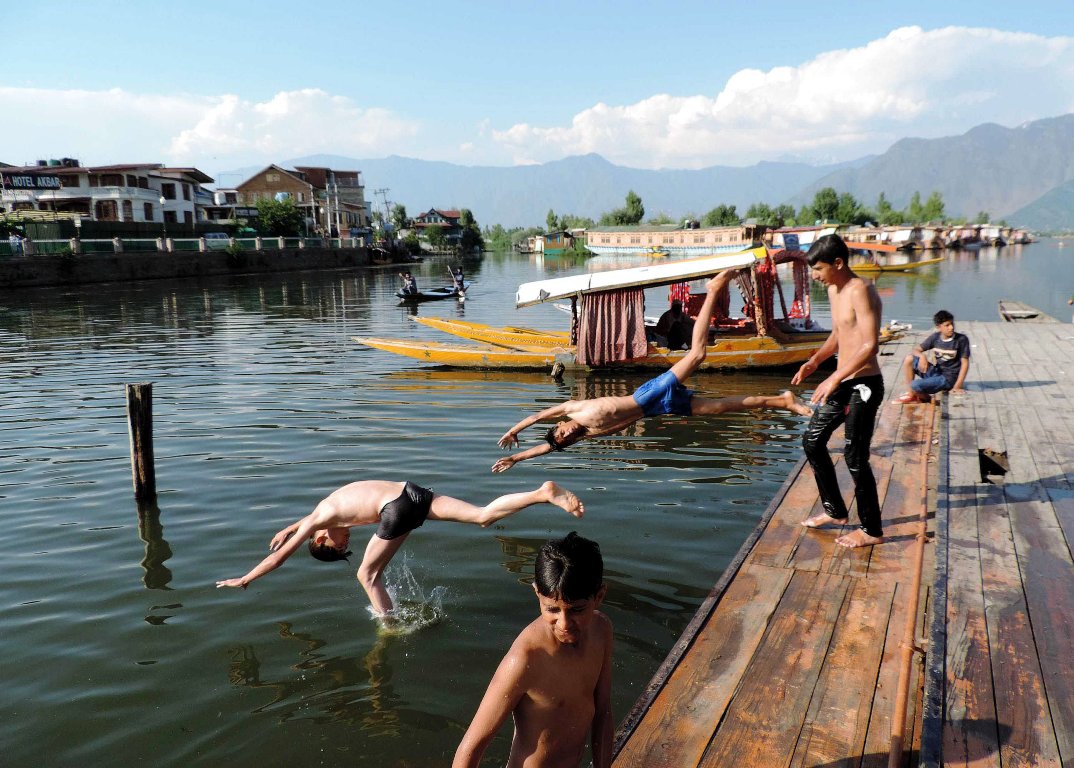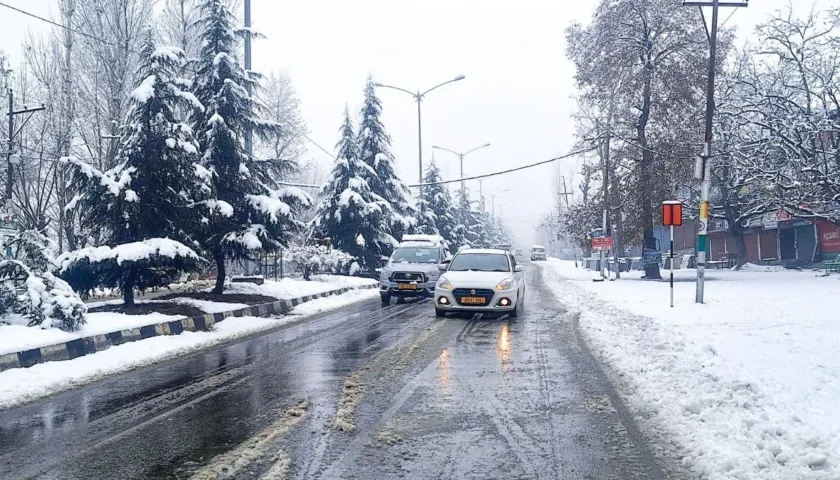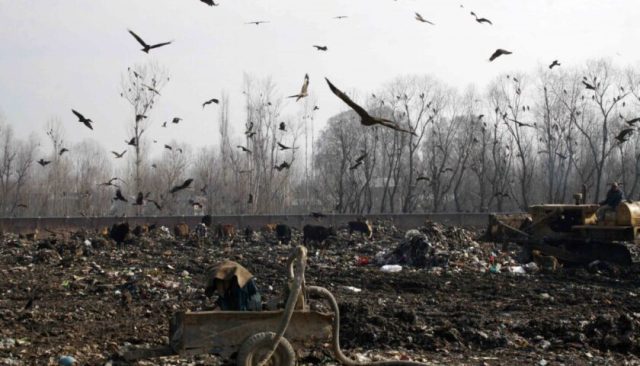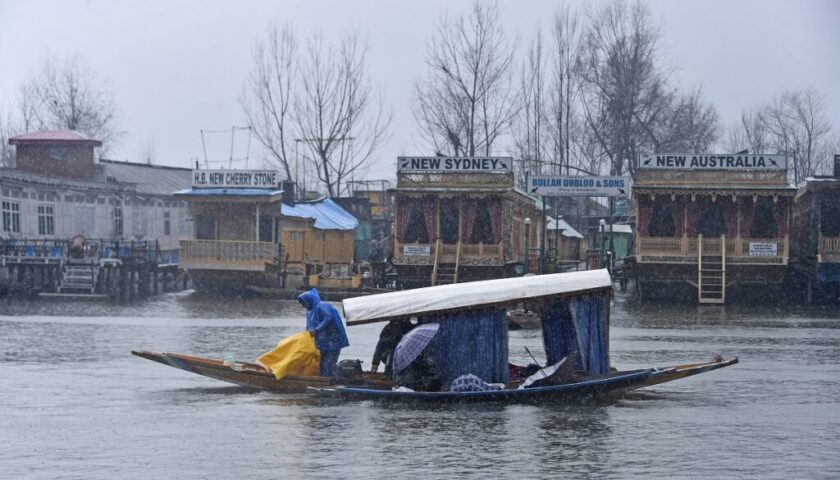Srinagar Heatwave Hits 35.3°C, Second-Hottest Day This Season: Kashmir Faces Climate Emergency
By: Javid Amin | Srinagar | 05 July 2025
Heat Rising: Srinagar Records Second-Hottest Day of the Season
Kashmir, long known for its mild summers and cool mountain breezes, is now grappling with intense and prolonged heatwaves. On Friday, Srinagar scorched at 35.3°C, making it the second-hottest day of the season after the 35.5°C mark reached on June 24. Even more startling: it was hotter than Jammu, which recorded 35.0°C on the same day.
Heatwave Highlights Across Kashmir:
- Kupwara: 35.4°C
- Qazigund: 34.4°C
- Pahalgam: 30.2°C
- Gulmarg: 26.0°C (coolest major location)
The India Meteorological Department (IMD) has forecast that the heatwave will persist, with temperatures possibly spiking again before moderate rainfall between July 6 and 8.
Weather Outlook: Is Relief in Sight?
According to the IMD’s extended forecast:
- July 6 to 8: Cloudy skies, with light to moderate rain and thunderstorms across most parts of Kashmir.
- Hilly regions: Flash flood and landslide warnings have been issued due to anticipated rainfall.
- July 11 to 12: A return to hot and humid conditions, although brief showers might offer momentary respite.
Authorities are on alert and have issued advisories urging people to:
- Stay indoors during peak heat hours (12–4 PM)
- Stay hydrated and wear loose cotton clothes
- Avoid unnecessary travel, especially in vulnerable and lowland areas
Heatwave Impact on Children: A Growing Public Health Emergency
While the rising mercury is difficult for everyone, it’s particularly dangerous for children. Doctors and public health experts warn that children’s unique physiology makes them more susceptible to heat-related illnesses.
Why Children Are More Vulnerable:
- Higher surface area-to-weight ratio: Kids heat up faster and dehydrate quickly.
- Underdeveloped thermoregulation: Their bodies are less efficient at cooling down.
- School exposure: Many schools lack basic ventilation and cooling infrastructure. Some children endure long commutes in overcrowded vans with no air conditioning.
Disturbing Trends:
- Record-breaking June: June 2024 was the hottest June in Srinagar since 1978, with average maximum temperatures around 31°C.
- Health emergencies rising: Hospitals are reporting a sharp increase in dehydration, fainting spells, and heat exhaustion among children.
- School closures: A 15-day summer break (June 23–July 7) was declared to protect students from heat exposure.
Government Response: Action Plans and Mitigation Measures
The Srinagar District Heat Wave Action Plan has been activated to mitigate the crisis. Key measures include:
Key Provisions:
- Suspension of classes during peak heat hours (12–4 PM)
- Mandatory shaded shelters in school premises
- Access to clean drinking water and ORS (oral rehydration solution)
- Teacher training on identifying heatstroke and handling emergencies
- Student awareness campaigns through interactive sessions and posters
The Climate Crisis Unfolding in Kashmir
This isn’t just a freak weather event. Experts say the Kashmir Valley is now on the frontlines of climate change. What was once a temperate haven is turning into a seasonal pressure cooker.
Signs of a Climate Breakdown:
- Glacial retreat: Kashmir’s glaciers are shrinking at alarming rates, reducing the water supply to rivers and agriculture.
- Erratic rainfall: Monsoon patterns have become increasingly unpredictable, disrupting crops and increasing flood risk.
- Power blackouts: The electricity grid often fails under pressure during peak summer months, compounding public discomfort.
- Increased health risks: Beyond heatstroke, rising temperatures aggravate respiratory conditions, skin infections, and stress disorders.
Beyond Srinagar: A Regional Snapshot
The heatwave isn’t confined to Srinagar. Other districts have reported worrying highs and climate anomalies:
- Kupwara: Often cooler, now consistently topping temperature charts
- Pulwama and Anantnag: Reporting cases of heat stress among farmers
- Baramulla: Urban heat island effect observed due to unregulated construction and vanishing green cover
Rural and Agricultural Impacts: A Silent Emergency
The rural belt, especially in south Kashmir, is facing the dual challenge of high temperatures and drying streams. Irrigation failures and wilting crops are early signs of what could evolve into an agriculture crisis.
- Apple orchards: Leaf scorch and premature fruit drop observed in Shopian and Kulgam
- Paddy fields: Delayed transplantation due to water shortages
- Livestock: Heat stress reported among dairy cattle and sheep
Farmers are calling for timely power supply, diesel subsidies, and emergency irrigation support to protect the summer harvest.
Community Voices: Real People, Real Struggles
Tariq Ahmad, a rickshaw driver in Downtown Srinagar, says:
“I have never seen heat like this in July. I pour water on my head every hour and still feel dizzy.”
Shabnam Jan, a mother of two from Pulwama:
“My kids fainted twice in school vans last week. Why are we being made to suffer like this? We need cool shelters and water facilities.”
Dr. Iqbal Hussain, pediatrician at a Srinagar hospital:
“Most of our OPD cases are now heat-related. We have asked schools and parents to avoid any outdoor exposure.”
Policy Recommendations and Future Steps
Experts recommend a comprehensive heat resilience strategy for Jammu & Kashmir that includes:
- Urban heat island mapping for city planning
- Mandatory green zones in all public institutions
- Climate-responsive school design with passive cooling techniques
- Real-time climate alerts integrated into local governance
- Seasonal job rotation for outdoor workers
- Expanded irrigation support and climate-resilient crops
Bottom-Line: A Tipping Point for Kashmir
The Srinagar heatwave is more than a weather event—it’s a climate emergency and a humanitarian concern rolled into one. From hospital corridors to school playgrounds, and from parched fields to overheated homes, Kashmir is showing signs of a region in distress.
Unless urgently addressed through policy, planning, and public awareness, this could become the new normal.
Now is the time to act: for our children, our farmers, and our future.




